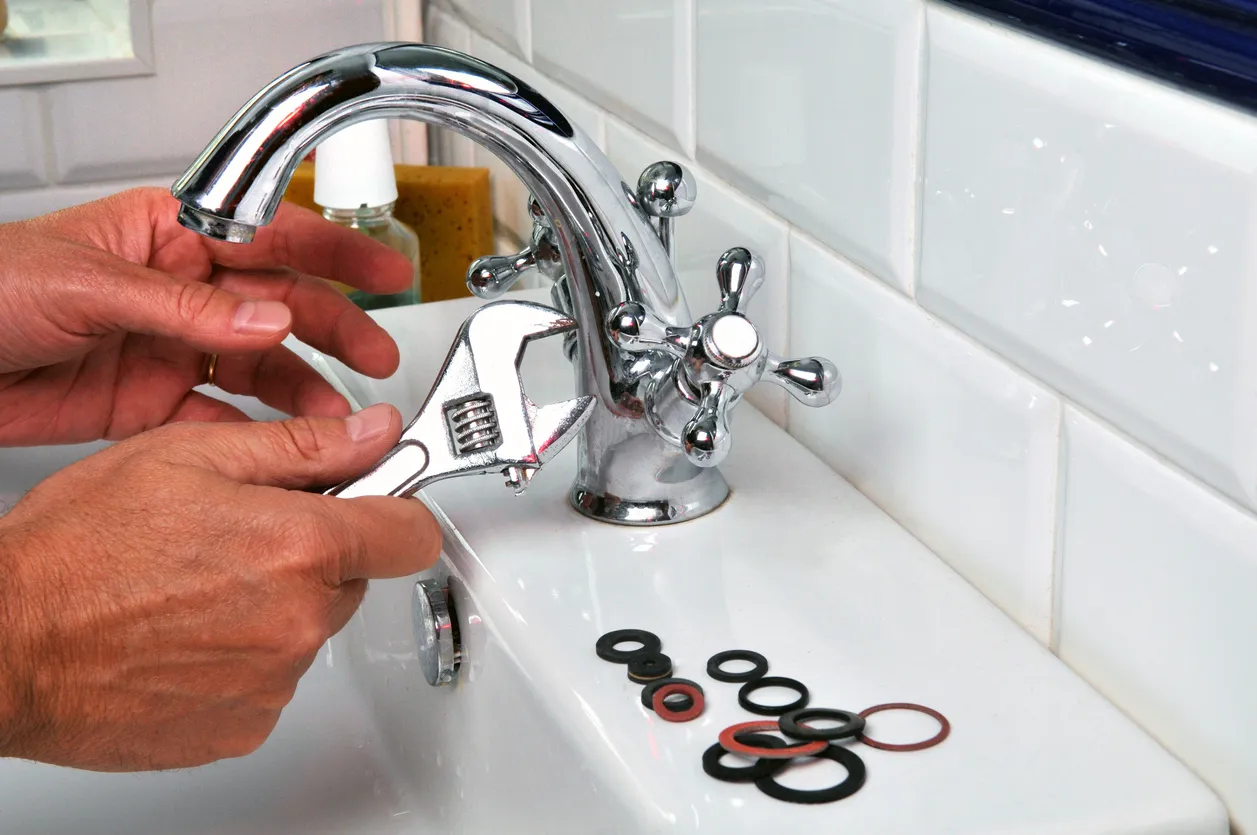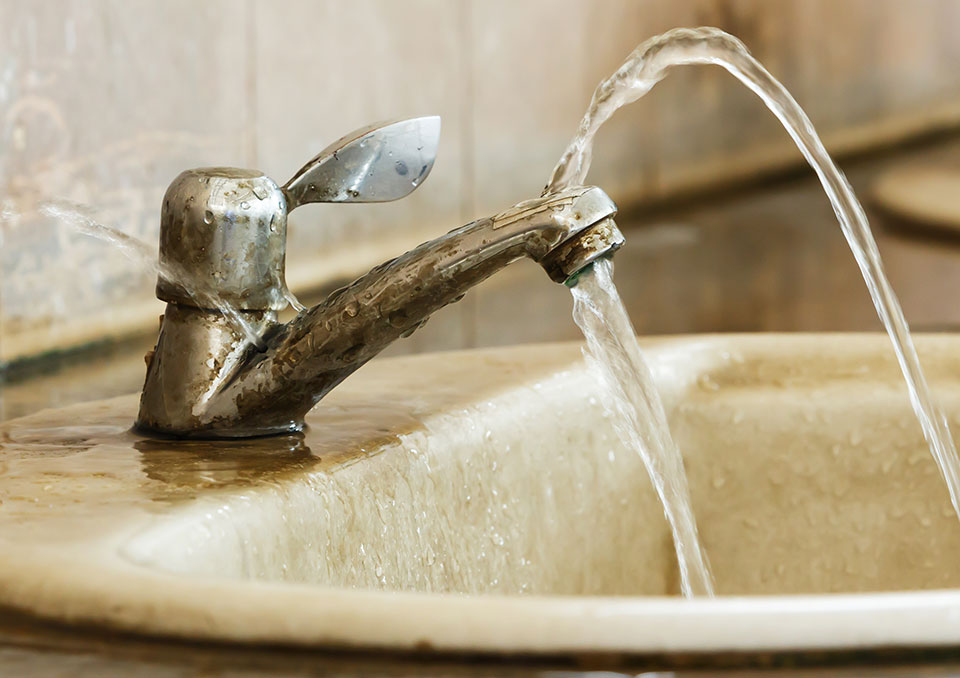We've stumbled on this post relating to Leaky Faucets: Why They Happen & What to Do About Them below on the internet and reckoned it made sense to discuss it with you in this article.

Leaking taps may look like a small aggravation, but their influence goes beyond just the aggravation of the noise. From wasting water to incurring unnecessary monetary prices and health risks, ignoring a dripping faucet can cause different consequences. In this post, we'll look into why it's vital to resolve this typical household problem promptly and properly.
Wastage of Water
Environmental Impact
Dripping taps contribute significantly to water waste. According to the Epa (EPA), a solitary tap dripping at one drip per secondly can squander greater than 3,000 gallons of water annually. This not only stress water sources however additionally affects communities and wildlife depending on them.
Financial Prices
Raised Water Bills
Beyond the ecological influence, leaking taps can inflate water bills significantly. The collected wastage with time equates right into greater utility expenses, which can have been avoided with timely repairs.
Possible Residential Or Commercial Property Damage
Additionally, long term leaking can result in harm to components and surface areas bordering the tap. Water buildup can cause discoloration, corrosion, and also structural concerns if left ignored, resulting in added repair expenses.
Health and wellness Problems
Mold And Mildew and Mold Growth
The continuous presence of moisture from a dripping faucet develops a suitable environment for mold and mold growth. These fungis not just compromise indoor air quality but additionally pose health and wellness threats, particularly for people with respiratory problems or allergic reactions.
Waterborne Diseases
Stagnant water in dripping taps can come to be a breeding place for germs and various other microorganisms, boosting the threat of waterborne illness. Impurities such as Legionella bacteria grow in stationary water, potentially bring about major ailments when consumed or breathed in.
DIY vs. Specialist Fixing
Pros and Cons of DIY Fixing
While some might try to repair a leaking faucet themselves, do it yourself repair work come with their very own collection of obstacles. Without proper knowledge and tools, DIY attempts can intensify the problem or bring about incomplete repairs, extending the problem.
Benefits of Hiring an Expert Plumber
Hiring an expert plumber makes certain that the underlying cause of the trickling tap is addressed efficiently. Plumbing technicians possess the experience and devices to identify and repair faucet issues effectively, conserving time and lessening the danger of additional damage.
Step-by-Step Overview to Repairing a Dripping Tap
Tools Called for
Prior to trying to fix a dripping faucet, collect the required devices, including an adjustable wrench, screwdrivers, replacement parts (such as washing machines or cartridges), and plumber's tape.
Typical Tap Issues and Their Solutions
Recognize the kind of tap and the details concern causing the drip. Typical problems include worn-out washers, corroded shutoff seats, or damaged O-rings. Describe supplier instructions or on-line tutorials for step-by-step assistance on repairs.
Safety nets
Routine Maintenance Tips
To prevent leaking taps, perform regular upkeep such as cleaning up aerators, inspecting for leakages, and replacing worn-out parts quickly. In addition, take into consideration installing water-saving gadgets or upgrading to extra efficient fixtures.
Significance of Prompt Repairs
Attending to trickling taps as quickly as they're observed avoids more water wastage and potential damage, inevitably conserving both water and cash over time.
Impact on Building Value
Assumption of Well-Maintained Residential Property
Keeping a residential or commercial property in good condition, including resolving maintenance issues like leaking taps, boosts its viewed worth and value among potential purchasers or renters.
Impact on Resale Worth
Qualities with well-maintained plumbing fixtures, consisting of taps, command higher resale values in the property market. Resolving dripping faucets can contribute to a favorable impact during residential or commercial property evaluations and arrangements.
Ecological Responsibility
Private Payment to Preservation
Taking duty for repairing dripping faucets lines up with wider initiatives towards water conservation and environmental sustainability. Every person's actions collectively make a substantial effect on maintaining precious resources.
Sustainable Living Practices
By focusing on punctual repairs and taking on water-saving habits, people contribute to sustainable living methods that benefit both existing and future generations.
Verdict
Resolving a dripping faucet surpasses simple comfort; it's an essential action toward conserving water, decreasing economic prices, and securing wellness and building. Whether with do it yourself fixings or professional assistance, acting to fix leaking faucets is a tiny yet impactful means to advertise liable stewardship of resources and add to a healthier, extra lasting future.
How to Fix a Leaky Faucet: Step-by-Step Repair Guide
A leaky faucet may seem like a simple annoyance, but if it's not fixed promptly, that leak could cost hundreds to potentially thousands. From water damage to mold, mildew, and high water bills, even a tiny leak can be catastrophic if left unattended. Damage like this can even affect the overall value of your home, so it's important to take the right approach for leaky faucet repair. You may need the help of a plumber in some cases, but we've got a few tips you can try on how to fix a leaky faucet before calling the pros.
Four Faucet Types
When you're learning how to fix a leaky faucet, the first step is knowing what kind of faucet you're working with! There are four common types.
Cartridge Faucets
Cartridge faucets come in one- or two-handled varieties. In one-handled cartridge faucets, hot and cold water combines in a single cartridge. In the two-handled versions, hot and cold water are controlled separately and mixed in the faucet.
Ball Faucets
Ball faucets have a single lever you push up and down to adjust the pressure and rotate to change the temperature. A slotted metal ball controls the amount of water allowed into the spout.
Compression Washer Faucets
They're the oldest type of faucet, but they're still used in many homes — especially older ones. Compression faucets have two separate handles that, when turned, raise or lower the washer that seals a water valve. This valve stops water from flowing through the faucet when it is turned off.
Disc Faucets
Disc faucets rarely need to be repaired due to their maintenance-free design. The water flow is controlled by two discs — the upper one raises and lowers against a fixed lower disc, creating a watertight seal. If your disc faucet starts leaking, you may need to replace the seals or clean residue buildup from the inlets.
Fixing a Leaky Faucet
Step 1: Turn Off the Water
Whether you're learning how to fix a leaky bathtub faucet or how to fix a leaky kitchen faucet, always turn off the water supply to your working area when you're fixing a leak. The last thing you want is a flood added to your list of things to fix.
Look for the shutoff valves below your sink or around the tub and turn them clockwise to stop the water flow. If your faucet doesn't have shutoff valves, you may need to turn off the water for the whole house. Check to make sure it's off by turning the faucet on. If nothing comes out, you're ready to start the repair.
Step 2: Take Apart the Faucet
How you disassemble your faucet depends on the type of fixture you have. You can use a flathead screwdriver to remove the caps on top of the handle or handles for cartridge and compression faucets. Inside, you should see handle screws. Unscrew these with a screwdriver to remove the handle.
Disc- and ball-style faucets will typically have an inlet screw near the handle, and removing that will reveal the interior of the faucet.
Detach the Valve Stem
For cartridge- and compression-style faucets, you'll see the inner valve stem or cartridge once you remove the faucet handles. If you have a compression faucet, unscrew the brass valve stem. If you have a cartridge faucet, pull out the cartridge. If your cartridge has been in place for a while, it may require some tools or extra force to remove it due to mineral deposits.
Examine and Replace Parts
Once you've removed the parts, check them out to confirm what needs to be replaced. You may see corroded rubber washers, O-rings, stems, or cartridges. On a ball-style faucet, check the seats and springs for damage.
If you need to repair a leaky disc faucet, check the inlet and seals on the lower disc.
Once you determine what parts must be replaced, visit your local hardware store. Bring the damaged parts with you to ensure you can purchase the correct components to replace them.
Clean Valves and Faucet Cavity
If you've removed a stem or cartridge, you may notice mineral buildup in the faucet's threads. Use white vinegar to clean the valve seat by soaking it for a few minutes, then scrub it away with a soft toothbrush and rinse with warm water. You can also clean the interior of the faucet in the same way.
Reassemble the Faucet
Once your faucet is cleaned and the required parts have been replaced, it's time to reassemble it. Put the pieces back together and slowly turn the water supply back on. Doing this slowly is crucial because too much initial water pressure can damage the new hardware you've just installed.
https://homewarranty.firstam.com/blog/how-to-fix-leaky-faucet

I am just very serious about Water Dripping from Faucet: Why and How to Fix and I hope you liked the entire blog post. Are you aware of somebody who is interested by the subject? Feel free to share it. Thank you for taking the time to read it.